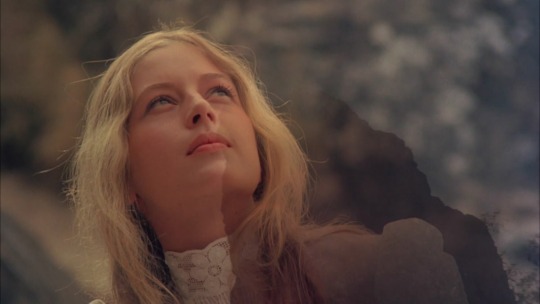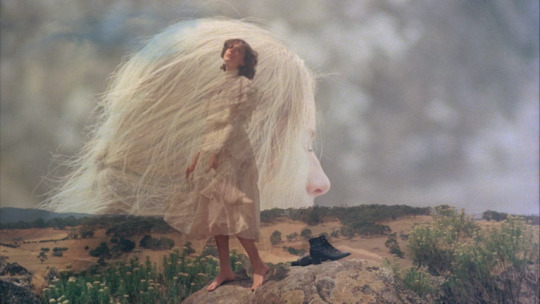Embracing the Unknown: Picnic at Hanging RockBy Piers Marchant
By Yasmina Tawil

The most important parts of a film are the mysterious parts beyond the reach of reason and language. Stanley Kubrick
Coming-of-age films generally chronicle the moment where a sexual and emotional awakening is at hand, the point at which we transition from dreamy, fun-loving kids into neurotic, beleaguered adults. (Or maybe that was just me.) If we track a bit further back from that point, however before the characters careen all the way over the waterfall, when they can just begin to hear the distant roar aheadthere can be found a very different kind of attitude: fear of the unknown.
Peter Weirs masterpiece, Picnic at Hanging Rock, takes us to the precipice of adulthood in the guise of a simple mystery story, by quite literally throwing some of its characters off a cliff (or at least behind one). The film opens with a long, static shot of the southern Australian desert, with small, gnarled trees and scrub brush in the foreground and a thick, hovering cloud of fog obscuring the horizon line. Gradually, the fog shifts and settles down over the trees, revealing the jutting expanse of distinctive, jagged cliffs that make up Hanging Rock, a monolithic mamelon slowly being exposed, as the ground below it becomes concealedone of many apt metaphors Weir has in his employ.
In fact, the idea of the monolithexplored in equally confounding ways by Stanley Kubrick in his 2001: A Space Odyssey, released some seven years before Weirs film in 1968duly serves as the films linchpin, without ever disclosing its purpose or intentions. The genius of the narrative, based closely on Joan Lindsays novel of the same name, is in this particular kind of murkiness: Picnic can be about practically anything you want to ascribe to it. Is it a meditation on the plaintive unknown of sexual awakening? A film about the limitations of human understanding? Does it concern the idea of our intellectual and spiritual frailty? All of the above and vastly more. In the end, we have a narrative steeped in the idea of mystery at its most elemental. To do this, the film takes a form that Kubrick himself would explore in The Shining some years later: It begins simply, as a kind of genre film, but gradually opens up to a more abstract consideration of the unknown.

By taking an elegant Victorian-era mysterythree girls and their Mathematics mistress from a fancy, turn-of-the-century boarding school go missing amongst the strange, obelisk-like stone protuberances and sharply cut pathways of the Rock, after a class picnic on Valentines Day in 1900and blowing up the conceit far past the point of solution, Weir has free reign to explore the obsessive conniptions we experience when presented with a true, unsolvable enigma.



